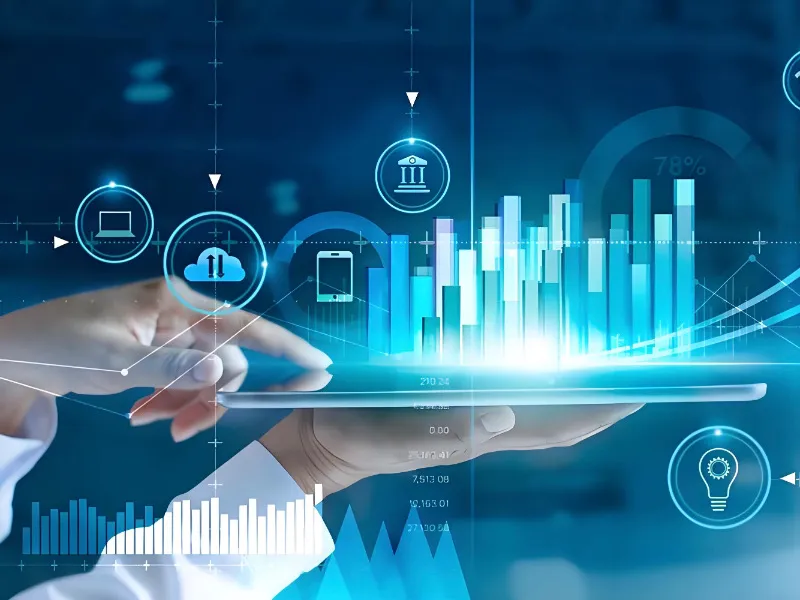- Predictive analytics, a cornerstone of data science, transforms raw data into foresight. By harnessing historical data, statistical algorithms, and machine learning techniques, it predicts future outcomes.
- Predictive analytics involves using various data sets to forecast future trends. At its core, it relies on data mining, statistical modeling, and machine learning.
Predictive analytics, a cornerstone of data science, transforms raw data into foresight. By harnessing historical data, statistical algorithms, and machine learning techniques, it predicts future outcomes. This practice isn’t just about crunching numbers; it’s about anticipating what lies ahead, making it an invaluable tool for businesses, governments, and individuals.
The Essence of predictive analytics
Predictive analytics involves using various data sets to forecast future trends. At its core, it relies on data mining, statistical modeling, and machine learning. Think of it as a sophisticated crystal ball. Unlike traditional analysis that explains what happened, predictive analytics tells us what is likely to happen. For example, a retail company can analyse past purchase behaviors to predict which products will be in high demand next season. This foresight allows them to optimise inventory, reduce waste, and boost sales.
Also read: Future trends in AI, analytics, and automation
Also read: NetCologne partners with BENOCS to bolster network analytics
How predictive analytics works
The process of predictive analytics starts with defining the objective. What do we want to predict? Next comes data collection. This involves gathering historical data relevant to the objective. For instance, if we aim to predict customer churn, we need data on past customer behaviors, demographics, and interactions.
After data collection, the next step is data preprocessing. This means cleaning the data, handling missing values, and transforming it into a suitable format. Think of this step as preparing ingredients before cooking a gourmet meal. Once the data is ready, we select and train the appropriate predictive model using machine learning algorithms. These algorithms learn from historical data and identify patterns that can forecast future outcomes.
Applications of predictive analytics
Predictive analytics has myriad applications across various industries, each revolutionising how organizations operate.
Healthcare
In healthcare, predictive analytics saves lives. By analysing patient data, hospitals can predict disease outbreaks, patient admissions, and treatment outcomes. For example, by examining historical data on flu outbreaks, hospitals can predict future surges and prepare accordingly. This foresight helps in allocating resources efficiently, ensuring patients receive timely care.
Finance
In finance, predictive analytics is a game-changer. Banks use it to detect fraudulent transactions. By analysing patterns in transaction data, they can flag anomalies that indicate fraud. For instance, if your credit card is suddenly used in a different country for a large purchase, predictive models can alert the bank to possible fraud, potentially saving you from significant losses.
Marketing
Marketing departments thrive on predictive analytics. By analysing customer data, companies can predict buying behaviors and tailor their marketing strategies accordingly. For example, streaming services like Netflix and Spotify use predictive analytics to recommend shows and music based on your past viewing and listening habits. This personalised approach not only enhances user experience but also drives engagement and loyalty.
Supply chain management
In supply chain management, predictive analytics optimises operations. Companies can predict demand for products, identify supply chain disruptions, and manage inventory effectively. For example, during the COVID-19 pandemic, predictive analytics helped many companies anticipate supply chain disruptions and adjust their strategies to maintain operations.
Challenges and future of predictive analytics
Despite its immense potential, predictive analytics faces challenges. One major hurdle is data quality.
The adage “garbage in, garbage out” holds true; poor-quality data can lead to inaccurate predictions. Another challenge is the complexity of models. Building and interpreting sophisticated models require expertise, which can be a barrier for some organizations.
Looking ahead, the future of predictive analytics is promising. With advancements in artificial intelligence and machine learning, predictive models will become more accurate and accessible. The integration of real-time data will further enhance predictive capabilities, allowing organizations to make more informed decisions on the fly.
Predictive analytics is not just a buzzword; it’s a transformative tool reshaping industries. From healthcare to finance, marketing to supply chain management, its applications are vast and impactful.
By leveraging historical data and advanced algorithms, predictive analytics offers a glimpse into the future, empowering organizations to make proactive, data-driven decisions.
As technology advances, its potential will only grow, solidifying its role as the crystal ball of the digital age.

